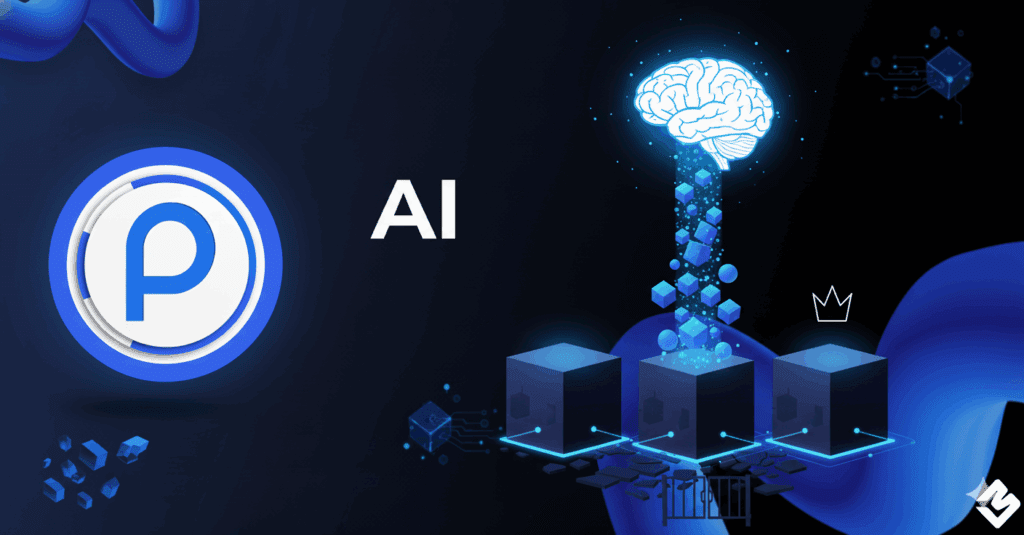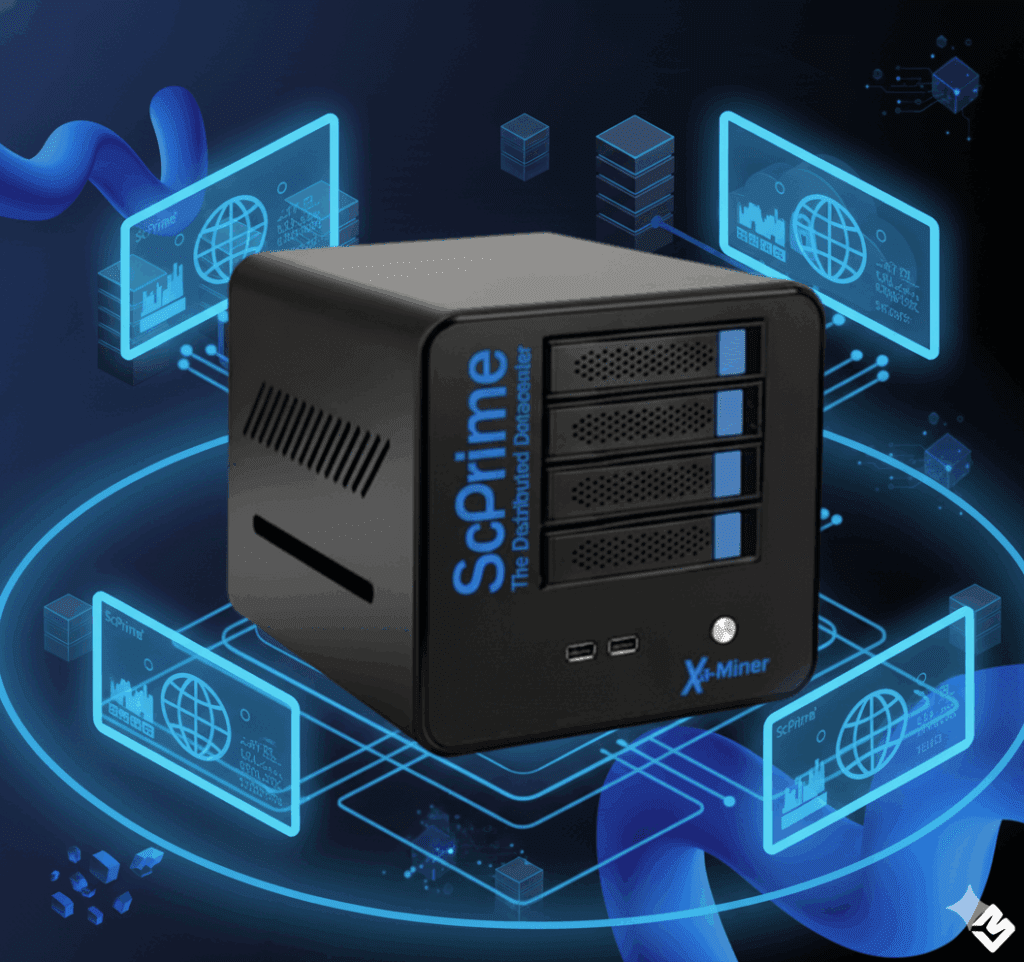Essential AI Decentralization
AI is becoming the largest consumer of object storage in human history. But the centralized cloud model—dominated by AWS, Google, and Microsoft—creates surveillance risks, political choke points, and economic fragility. ScPrime CEO Kenneth Bell argues that decentralization isn’t just preferable; it’s essential for the future of AI.

A Question at Lunch That Pulled a Thread Loose
Not long ago, I asked a colleague a question that felt harmless at the time: Where does AI actually live? Not theoretically—physically. Where does all the training data, the embeddings, the vector indexes, the model checkpoints, the logs, the outputs, the billions of files behind “intelligence” reside?
He hesitated just long enough to make the answer obvious.
“In the same three places everything else lives,” he finally said. “And that’s becoming a problem.”
It didn’t take long to see why. As the world races to build larger and more capable AI systems, nearly all of the foundational data for those systems is funneled—quietly, inevitably—into the same handful of hyperscale cloud providers. What we call “AI progress” is balanced atop the policies, economics, and geopolitical alignments of Amazon, Microsoft, and Google.
Which means the story of AI’s future is inseparable from the story of who controls the storage that feeds it.
Few people articulate this as clearly as Kenneth Bell, CEO of ScPrime, whose recent keynote cut through industry rhetoric with a kind of rare, technical honesty. Bell traced a decade-long arc of centralization and explained how the modern cloud, once sold as a democratizing force, has evolved into something far more powerful—and far more dangerous.
To understand why AI needs decentralized infrastructure, you first need to understand the world Bell insists we’re already living in.

“We’re Not Headed Toward Centralization. We’re Already Living Inside It.” — Kenneth Bell
Bell’s keynote began with a blunt acknowledgment: the modern cloud is failing the people who rely on it. Not because it doesn’t work—it works extraordinarily well—but because it works according to priorities that no longer align with what individuals, organizations, or nations actually need.
Cloud providers, Bell explained, have quietly transformed from neutral service vendors into something more like digital governors. They now function simultaneously as identity authorities, metadata custodians, analytics engines, compliance intermediaries, and political pressure points.
And it is metadata, not content, that gives them this power.
“Encryption protects content,” Bell said plainly. “Metadata reveals behavior. And behavior is more valuable than content.”
You can encrypt a file, but you cannot hide when you upload it, how often you access it, how large it is, what regions it touches, or how it evolves over time. In AI workflows—where data must constantly flow, transform, and update—metadata becomes a map of everything an organization is building. Centralized clouds see all of it by design.
And once metadata becomes legible, it becomes influence. It becomes leverage. It becomes vulnerability.
Now imagine that vulnerability multiplied across the entire global AI economy.
AI Runs Entirely on Object Storage—And That’s the Hidden Crisis
If you peel back the layers of any modern AI system, you’ll find one thing at the bottom every time: object storage.
Whether it’s:
- raw training data,
- curated data sets,
- preprocessed shards,
- evaluation corpora,
- batch inference outputs,
- vector databases,
- model checkpoints,
- multimodal inputs like audio or video,
- or the billions of files behind retrieval-augmented generation systems…
…all of it lives in object storage.
Not databases.
Not file systems.
Object storage.
Bell emphasized a striking truth: AI is already the largest and fastest-growing consumer of object storage in the world. And nearly every byte of that storage sits inside centralized infrastructure.
This means the future of AI—who controls it, who benefits from it, who is allowed to participate in it—is gated by three companies and the governments they are structurally aligned with.
That isn’t a technical problem.
It’s a sovereignty problem.

Why AI Cannot Thrive Under Centralized Control
Bell’s argument is not sentimental—it’s architectural.
Centralized clouds leak metadata by default. They operate at the intersection of corporate incentives and geopolitical interests. They require regulatory cooperation, data residency compliance, and, in some cases, national security alignment. As AI becomes more powerful and more politically consequential, the infrastructure that stores AI data becomes a target, a tool, and a pressure valve.
This isn’t hypothetical. It’s happening today.
For AI to remain open, experimental, globally accessible, and economically viable, the underlying storage infrastructure must offer something the centralized cloud fundamentally cannot: a structure in which no single entity can see, predict, or control the full behavior of the system.
That is what decentralization provides—not as a philosophical stance, but as an engineering reality.
The Virtual Private Data Center: A Different Model of Cloud Entirely
Bell’s introduction of the Virtual Private Data Center (VPD) is where ScPrime’s vision shifts from critique to construction. The VPD is not branding. It is not an abstraction wrapped in marketing. It is a functioning architectural layer that gives every user a configurable, sovereign, software-defined data center atop a decentralized network of independent providers.
In Bell’s words, “It is a personal cloud inside a distributed cloud.”
A VPD allows an AI team—or a nation—to define its own boundaries:
- where data is allowed to live or never allowed to live,
- how many redundancies are required,
- which providers qualify based on performance or history,
- how the data moves through life cycles,
- and how metadata exposure is minimized by design.
This is the opposite of the centralized cloud model. Instead of fitting into someone else’s infrastructure, the infrastructure conforms to you.
This shift is not cosmetic. It fundamentally changes what is possible in the age of AI.

Why AI and Decentralization Are Now the Same Conversation
When Bell talks about sovereignty, he is not simply referring to nations—though the geopolitical implications are enormous. He is talking about digital sovereignty for developers, researchers, institutions, and communities.
AI requires:
- reproducibility
- versioning
- lineage
- compliance
- regional control
- economic efficiency
- and independence from political and corporate choke points
All of these depend on the structure of the storage layer.
The more powerful AI becomes, the more important the storage layer becomes. And the more centralized that layer is, the more vulnerable the entire ecosystem becomes.
Bell’s conclusion is clear: the future of AI cannot rest on centralized foundations.
Not because decentralization is fashionable.
But because the stakes are now too high.
A Closing Thought: AI Will Reshape the World—But Only If the World Owns It
There is a moment near the end of Kenneth Bell’s keynote where he says something that crystallizes the argument better than any statistic:
“The future of the cloud doesn’t belong to the companies with the biggest data centers. It belongs to the networks with the strongest alignment between users and providers.”
AI cannot thrive in a world where the infrastructure beneath it is controlled by a handful of companies aligned with a handful of governments serving a handful of interests.
It needs an open foundation.
A sovereign foundation.
A foundation that scales with usage, not with political permission or corporate tolerance.
AI needs decentralization—not as an alternative, but as a condition for its future.
And that future is already being built.

